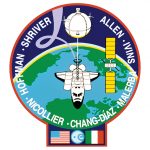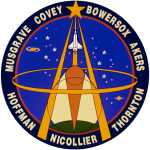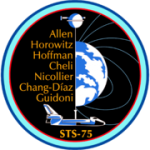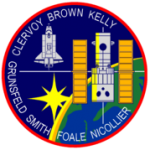CLAUDE NICOLLIER
Astronaut and Professor.
Claude in Space during the STS 61 mission (1993)
© NASA
CLAUDE NICOLLIER
Astronaut and Professor.
Claude in Space during the STS 61 mission (1993)
© NASA
ABOUT CLAUDE
Claude Nicollier has been for 30 years a European Space Agency (ESA) astronaut of Swiss nationality. He graduated from the University of Lausanne in 1970 (Bachelor of Science in physics) and the University of Geneva in 1975 (Master of Science in astrophysics). He also graduated as a Swiss Air Force pilot in 1966, an airline pilot in 1974 (flew DC-9s for Swissair 1974-1976), and a test pilot in 1988 (Empire Test Pilot’s School, Boscombe Down, United Kingdom).
He was a member of the first group of ESA astronauts selected in 1978. He then joined Group 9 of NASA astronauts in 1980 for Space Shuttle training at the Johnson Space Center, Houston, Texas, where he was stationed until September 2005. His technical assignments in Houston included Space Shuttle flight software verification in the Shuttle Avionics Integration Laboratory (SAIL), development of Tethered Satellite System (TSS) retrieval techniques, Remote Manipulator System (RMS) and International Space Station (ISS) robotics support. From 1996 to 1998, he was Head of the Astronaut Office Robotics Branch. From 2000 on, he was a member of the Astronaut Office EVA (Extravehicular Activity) Branch, while maintaining a position as Lead ESA astronaut in Houston. During his assignment in Houston, he also maintained an active duty status within the Swiss Air Force with a rank as Captain, flying Hawker Hunter, Northrop F-5E “Tiger”, and Pilatus PC-9 aircraft until end of 2004. He has logged more than 6400 flight hours, 4000 of which in jet aircraft.
He retired from ESA in 2007, and is currently a member of the Swiss Space Center and honorary professor at the Swiss Federal Institute of Technology in Lausanne or EPFL (Ecole Polytechnique Fédérale de Lausanne) where he teaches a course on “Space Mission Design and Operations”. He also provides assistance to students on various space related projects.
He was involved in the “Solar Impulse” solar powered aircraft project as Head of Flight Test and as a member of the Safety Review Board. The Solar Impulse aircraft landed in Abu Dhabi in the UAE July 26, 2016, after completing a round-the-world flight, with several stops, without using any propellant.
Claude Nicollier has been a crewmember on four Space Shuttle flights, STS-46 in 1992 (EURECA deployment and first test of a Tethered Satellite System or TSS), STS-61 in 1993 (first servicing mission of the Hubble Space Telescope), STS-75 in 1996 (second flight of TSS, and USMP-3 microgravity investigations), and STS-103 in 1999 (third servicing mission of the Hubble Space Telescope). He has logged more than 1000 hours in space, including a spacewalk of more than 8 hours duration to install new equipment on the Hubble Space Telescope on STS-103.
He is a recipient of Honorary Doctorates from EPFL, and the Universities of Geneva and Basel.
ASTRONAUT CAREER
1986
His first spaceflight was planned to be STS-61-K, which had been scheduled for October 1986, but was cancelled following the Space Shuttle Challenger accident.
1992

Nicollier’s first spaceflight was as a Mission Specialist on the 8-day Space Shuttle mission aboard Atlantis, called STS-46, in 1992. The crew deployed the European Retrievable Carrier EURECA, and tested the Tethered Satellite System-1, which was a joint NASA and Italian Space Agency project.
1993

His second spaceflight was as a Mission Specialist on the 10-day mission aboard Endeavour, called STS-61, in 1993. It was the first mission to service the Hubble Space Telescope, which had been launched three years earlier.
1996

In 1996 he took part in STS-75, aboard Space Shuttle Columbia, which deployed TSS-1R, which was a follow-up mission to TSS-1 which had been tested during STS-46.
1999

His final spaceflight was an 8-day mission aboard Space Shuttle Discovery, called STS-103, in 1999. It was the third servicing mission to the Hubble Space Telescope. During this mission Nicollier participated in an 8-hour spacewalk; it was his first, and the first of any ESA astronaut during a Space Shuttle mission.
PICTURES